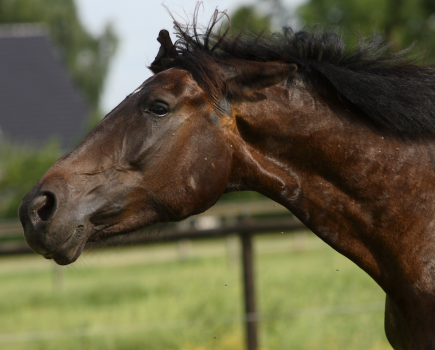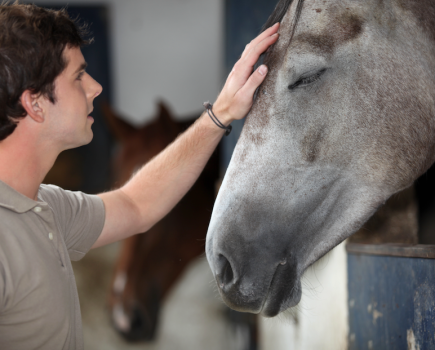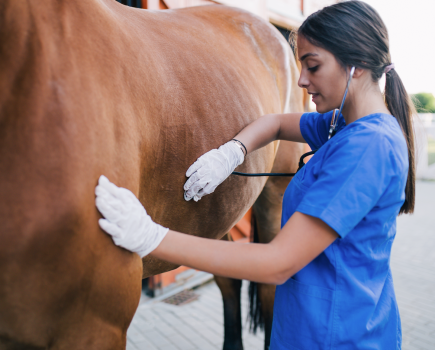Every horse owner needs to know how to poultice a hoof. However good your hoof care regime is, abscesses are common and being able to correctly apply a hoof poultice is vital for drawing out the infection and helping your horse make a quick recovery.
Foot abscesses occur when bacteria enters the hoof and causes infection. If the abscess isn’t likely to erupt by itself, your vet or farrier will make a small incision to allow the infection to escape.
Once that has been done, you can poultice the hoof. This will help to draw out infection and keep the area clean to prevent further reinfection.
Modern poultice dressings (such as Animalintex) contain boric acid and tragacanth, which helps draw out the pus.
Items you need
A hoof poultice can be applied warm or cold, and wet or dry. Wet and warm is usually recommended by vets because it is thought to draw out infection quicker than a cold or dry poultice.
If a poultice is required for more than two or three days, you may start to use a dry poultice instead as constant wetting can soften hooves, leaving them vulnerable to problems like thrush. Ask your vet for advice.
It is worth keeping the following items in your first aid kit, ready to use if you find yourself needing to apply a hoof poultice to your horse:
- A poultice dressing, such as Animalintex. Choose one that is a ready-made hoof-shape or cut a piece to size
- Scissors
- A roll of cotton wool
- Self-adhesive bandage, such as Vetrap
- Strong tape (such as Duck tape) for the external layer
- Clean warm water and a plastic container for soaking the poultice dressing in
- Clean towel for drying the hoof.
How to poultice a hoof
Alan Davies, who earned the nickname ‘super groom’ as head groom to Carl Hester and Charlotte Dujardin, explains how to poultice a hoof so that it stays in place and does the job correctly.
Here is his step-by-step guide:
1 Clean the hoof
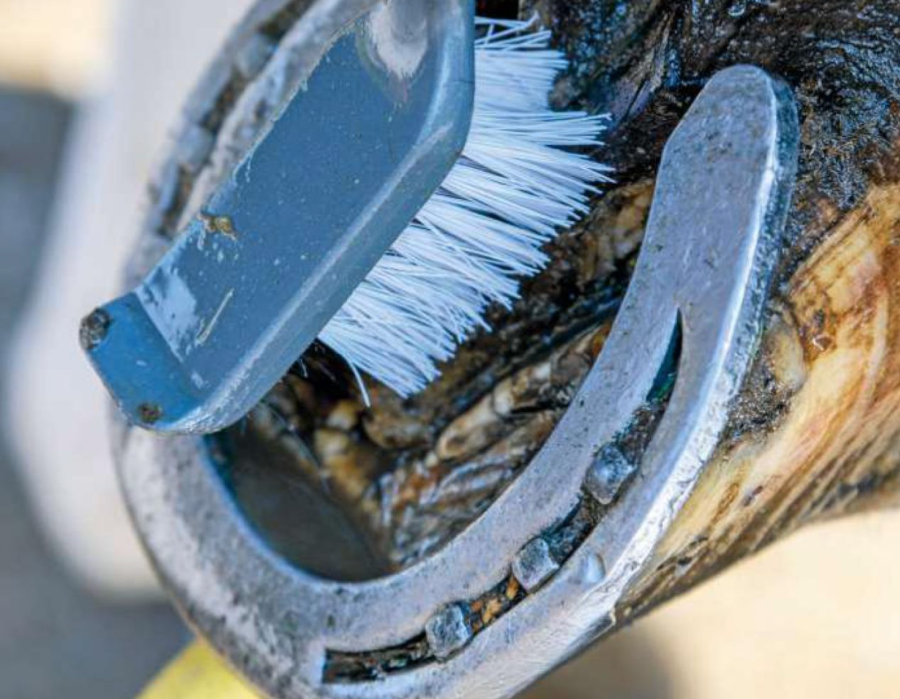
It is very important that the hoof is clean and dry, both on the outside and underneath, before you begin the poultice. Washing the hoof and then thoroughly towel drying it is the first step.
2 Get the dressing ready
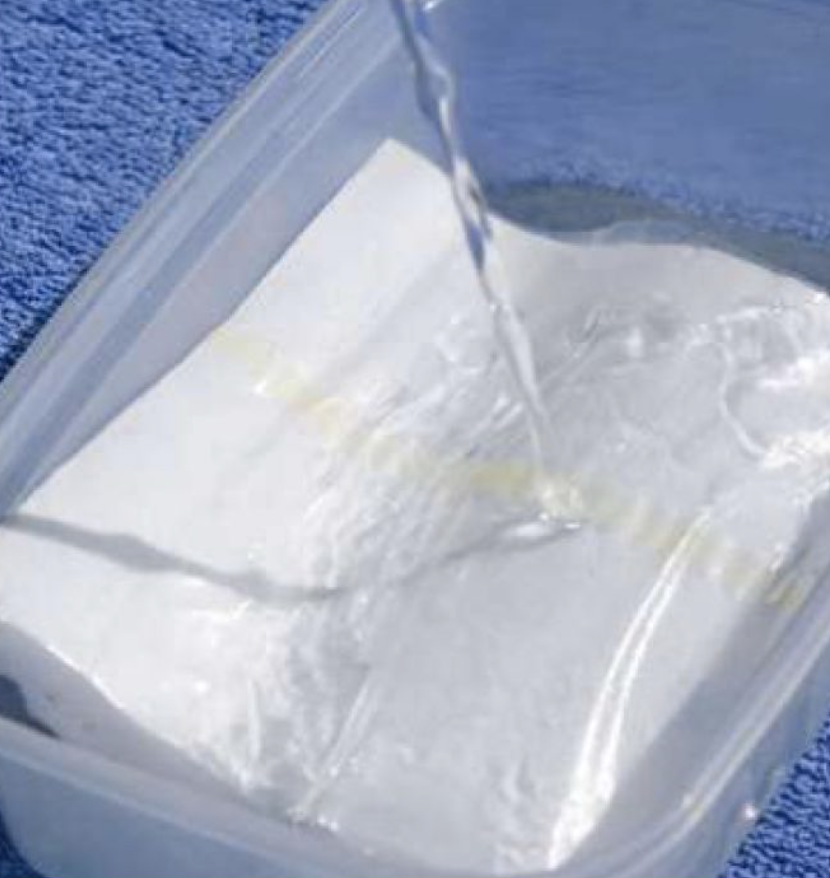
Cut your poultice dressing to size so that it covers the whole bottom of the hoof. If you’re using a wet poultice, soak it in clean, boiled water that’s been allowed to cool.
3 Apply the hoof poultice
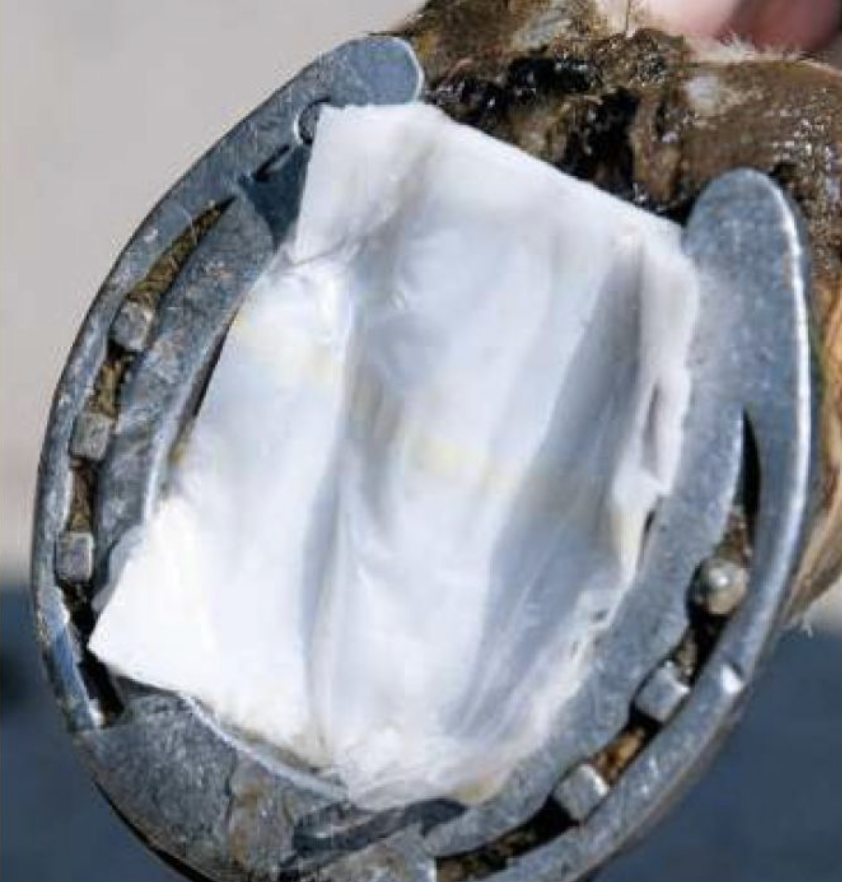
Squeeze out the excess water before you apply the dressing to the hoof. If you are using Animalintex (or something similar) and it has a ‘shiny’ side, make sure this plastic layer is facing outwards. Push the poultice into place.
4 Add a layer of padding
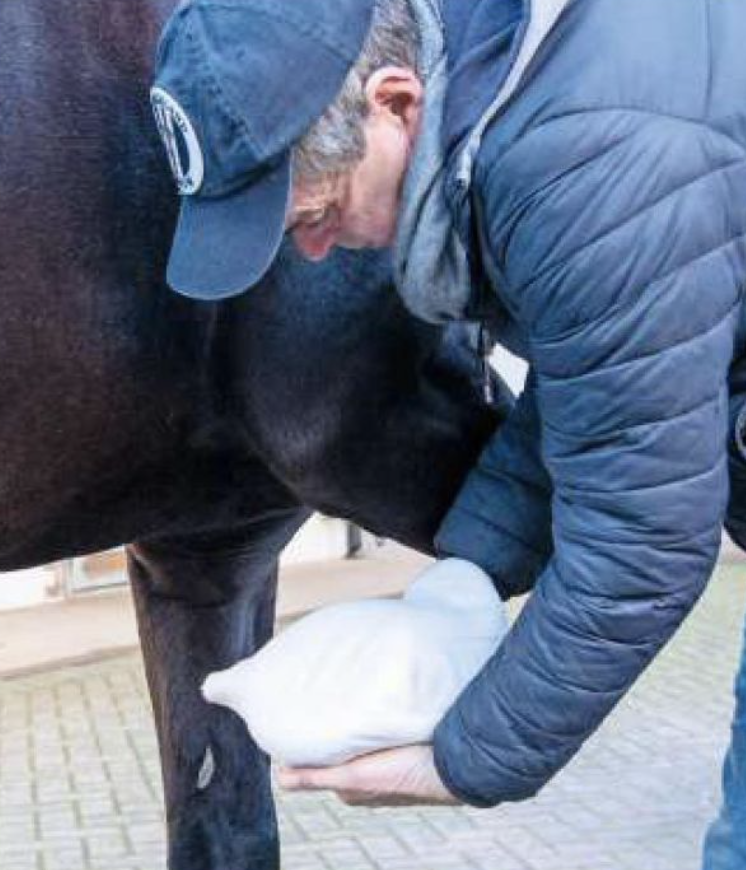
Wrap a layer of soft padding over the top of the poultice and around the hoof. Pay attention to cushioning soft tissue areas like the heel bulb and coronary band.
5 Cover with a protective layer
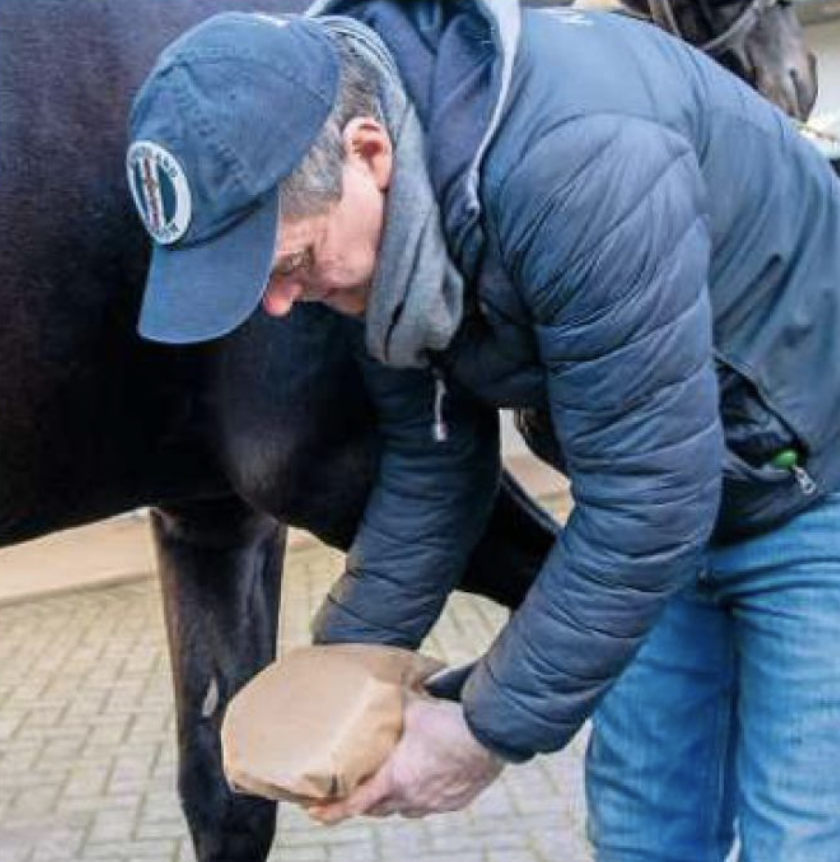
Next, Alan likes to wrap a piece of paper feed bag that has been cut to size around the entire hoof. It’s down to personal preference — not everyone will do it, but it works well for Alan.
“The idea is it helps prevent everything getting dirty,” he says. “It’s also easier for the next layer to stick to.”
6 Start bandaging
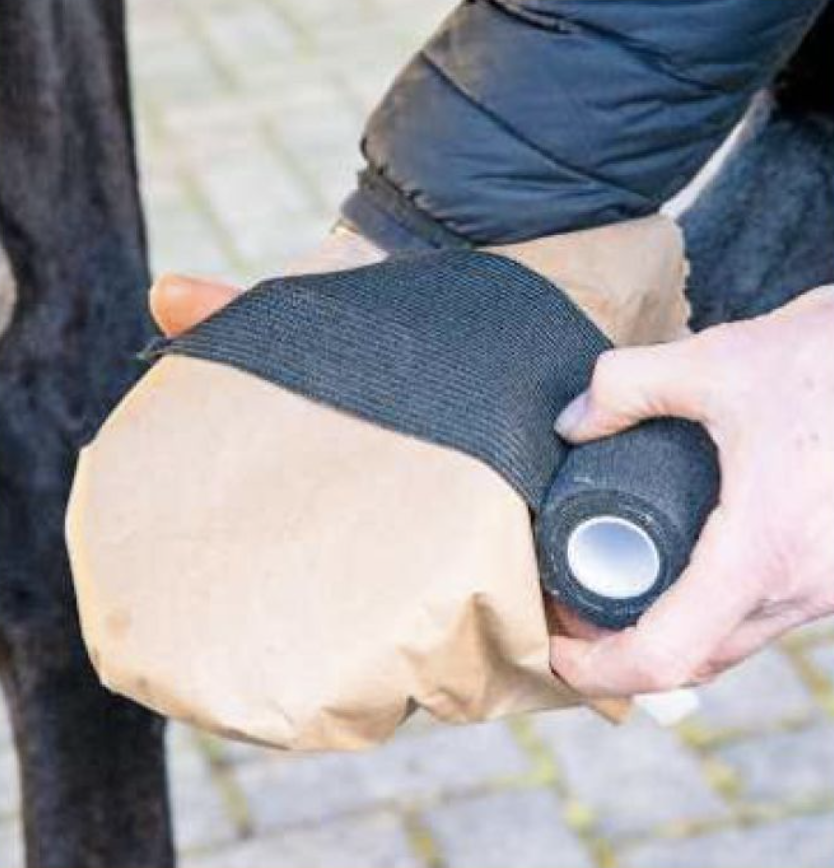
Now apply your self-sticking bandage over the top of the poultice to hold it all in place. “You don’t want it too tight, as this can cause pressure over the soft tissues, but it doesn’t want to be so loose that it falls off the hoof,” advises Alan.
Ensure you get good coverage under the sides of the hoof to hold the poultice in place. Some people like to cover the whole underside of the hoof (this is a must if you haven’t used the paper feed bag layer), which is fine.
7 Apply the duct tape
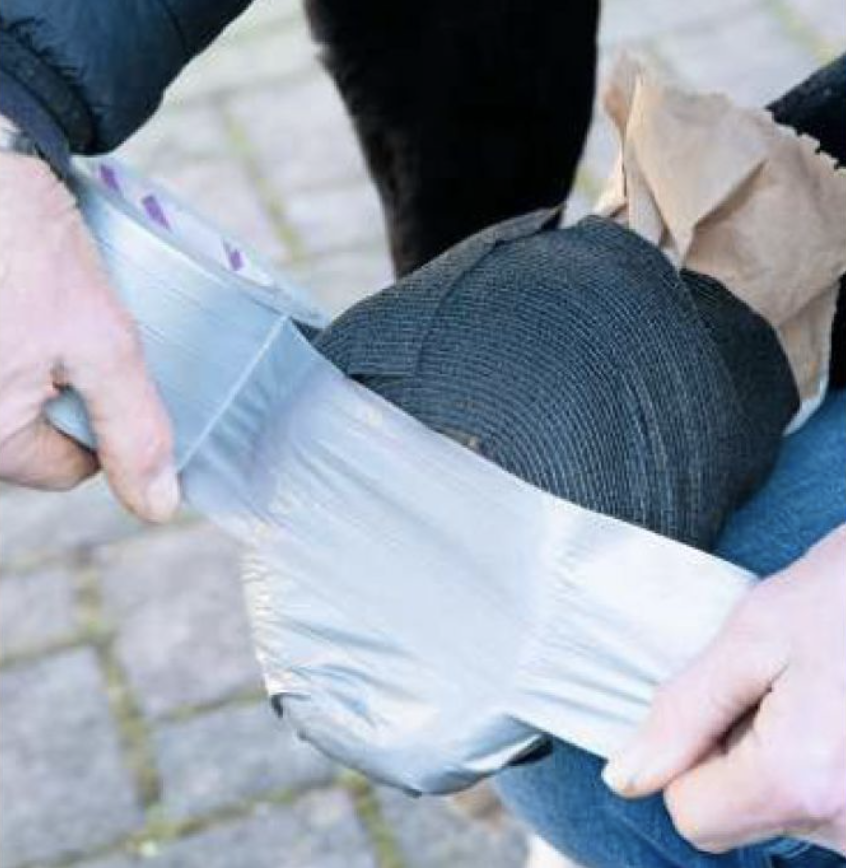
Now stretch duct tape over the top of the hoof poultice to create a waterproof layer. Cover the hoof in full — the entire bottom and all the way up to the top. You can also use a hoof poultice boot if you have one, but be careful it doesn’t rub.
8 Check your handy work
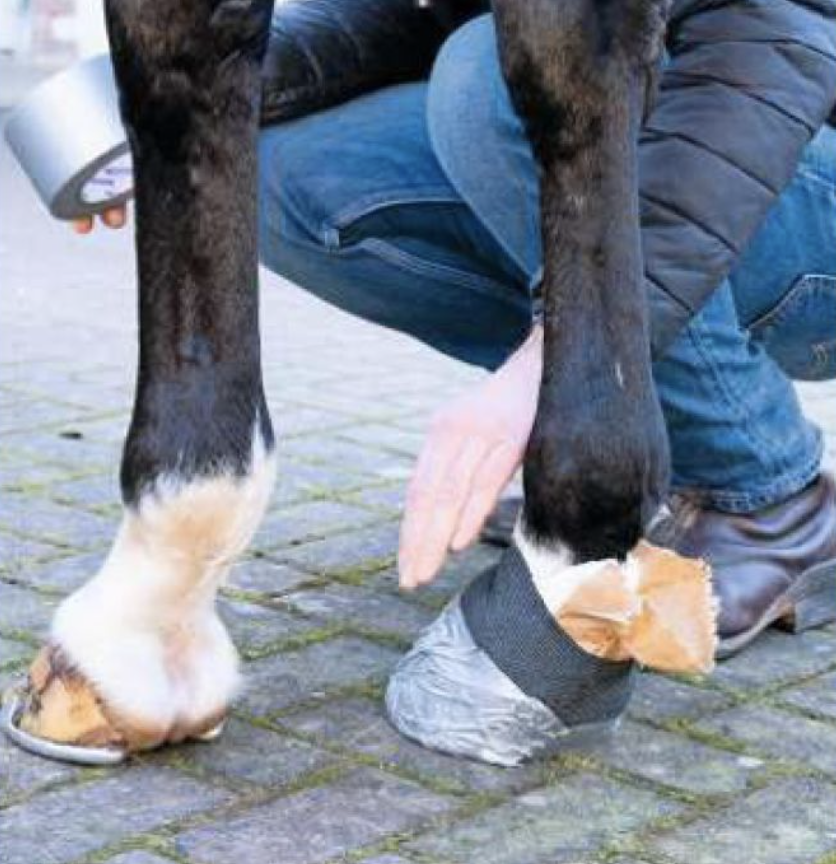
Make sure the duct tape is firmly stuck down by pressing it into place with your fingers, both on the top and bottom of the hoof. It’s a good idea to carefully make a small snip in the duct tape at the front above the coronet band, to help relieve any pressure on the horse’s pastern.
9 Change a hoof poultice regularly
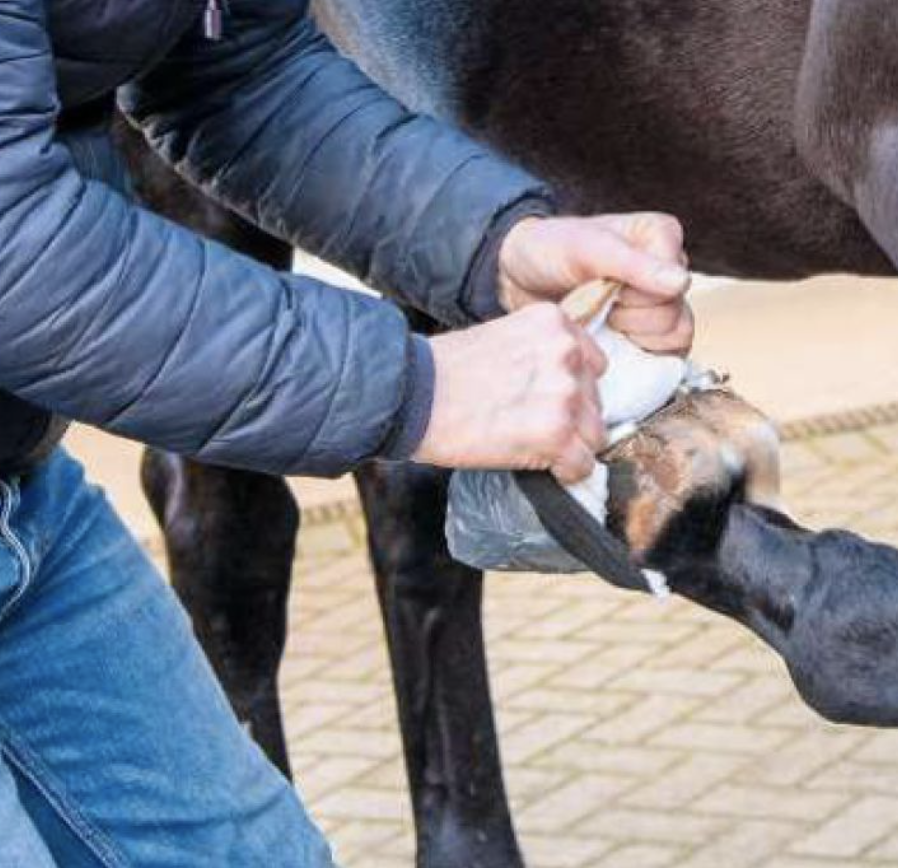
As a general rule, you will need to change a hoof poultice twice a day (morning and night), especially if there is a lot of pus coming out.
Sometimes once a day may be enough, but be guided by your vet’s advice.
By using the paper bag layer and leaving an inch or two sticking out at the top, it makes the whole hoof poultice easier to peel off.
Alan’s top tips for a hoof poultice
Don’t poultice more of the foot than you have to, especially if you are wet poulticing, as the hoof can become waterlogged, which weakens the horn.
- Only use a wet poultice for two to three days at a time, then switch to a dry poultice or dressing to keep the area clean.
- Watch out for any swelling coming up the pastern, as this can be a sign that the infection is going up the leg. If this happens, call your vet immediately.
If you find your horse requires a hoof poultice and you haven’t got the right materials to hand, don’t panic.
I’ve seen nappies used to poultice a hoof before, and cotton wool or Gamgee can work as a padding layer if it needs too. I’ve even seen hooves wrapped in a plastic bag (beneath the duct tape) to help it be waterproof too.
Even if none of these options are viable, another effective way to dealing with a foot abscess is to bathe your horse’s hoof (using warm water in a tub) for five minutes. Some horses are patient enough to tolerate, but others are not!
After bathing the hoof, towel dry it and then apply a dry poultice. I’ve found that using a dry dressing can mean it’s more likely to stay on.
When to apply a hoof poultice
Foot abscesses are very painful and sudden, extreme lameness is often the first most noticeable sign. I remember walking to the field to bring in my ex-racehorse Mr Buckle, only to find him on the other side of the field and nowhere near his field mates.
Thinking it was unusual, I called to him and he neighed back — a sad, “I’m in pain” neigh rather than his usual happy voice — and then he hopped two steps towards me.
He was non-weight bearing on his near fore and although I had seen and treated numerous hoof abscesses in the past, it was still a very worrying sight.
As luck would have it, my farrier was already on the yard to shoe a different horse and he kindly went into the field, found and released the abscess, allowing Mr Buckle a more comfortable walk to his stable, where I set about washing, drying and poulticing his hoof.
The relief when the farrier released the abscess was instant. Mr Buckle put his foot on the floor and was able to walk again. It took a couple of days of poulticing to draw all the pus out and he made a full recovery.
Signs of a hoof abscess
Signs that your horse may be suffering from a hoof abscess and require a poultice are:
- Heat in the hoof
- An increased digital pulse
- They’re in pain and discomfort and clearly lame
- Pus is discharging from the coronary band
- There is swelling up the leg.
Of course, the problem may not be an abscess at all, so it’s always best to consult your vet for advice as soon as you spot anything unusual. Hoof abscesses are very painful, so your vet may be able to prescribe painkillers for your horse.
All images © Your Horse Library/Sally Newcomb




